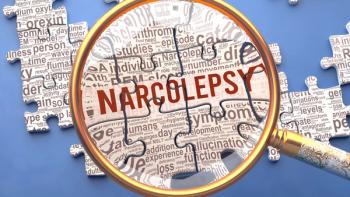
Report Reveals Biggest Missed Opportunities in Employer Benefits
Employers’ most commonly offered digital health benefits address health issues that employees rarely report as top health goals, according to a new report.
In late 2017, Castlight partnered with Employee Benefit News to poll employers and employees for trends in the digital health ecosystem. The study, “State of the Digital Health: 2018 Annual Report,” surveyed more than 300 benefits leaders and 1,000 employees, both from large companies (defined as more than 1,000 employees).
The study was conducted to discover how employers and employees perceive digital health and benefits, how their perspectives align or differ, and the key opportunities for employers implementing digital health. For this study, employers and employees were surveyed on 23 discrete categories of digital health, which collectively addressed the full spectrum of care. The categories are grouped into three areas: staying healthy, managing conditions and accessing care.
- Staying Healthy includes activity tracking devices, biometrics screenings, diabetes prevention, gym access, financial wellness, health coaching, nutrition management, stress and resilience, and health risk assessment.
- Accessing care includes cost transparency, EAPs, health concierge, second opinion, and telemedicine.
- Managing conditions includes cardiovascular health, children's health and obesity, diabetes management, disease management, mental health coaching tools, pregnancy programs, sleep improvement programs, smoking cessation, and weight loss.
- Employees are finding the digital health solutions that meet their health goals, with or without their employer, according to the report. Employees are 1.8 times more likely to consume digital health directly, rather than accessing through their employer.
“Healthcare is too complex and too expensive, and, as a result, too few people are getting the right care at the right time,” says Derek Newell, president of Castlight. “Most Americans get their health coverage from their employer, and so employers have a big opportunity to help people navigate the complicated healthcare landscape. Our report shows that there is a big missed opportunity in that regard. The benefits employers are most likely to offer are rarely the ones that meet employee health needs.”
None of the top goals employees named-weight loss, save for retirement/reduce debt, reduce stress, sleep better, improve nutrition, walk more, etc.-were among the top priorities identified by benefit leaders. The study also reveals that employees are accessing those tools, just doing so directly rather than with their employer.
Other unique findings from the report include:
- 2018 will be a breakout year for financial wellness. With 23% of employers surveyed committed to offering, or considering offering, a financial wellness solution in 2018, financial wellness is the fastest growing solution for 2018. These include tools like Enrich.
- Employers are incorporating a number of digital health solutions that meet discreet health needs into their benefits programs. The average employer offers 14 solutions, nine procured from a health plan, and five from a third-party vendor. Employers with 15,000 or more employees are even more likely to offer additional solutions, with 30% offering 20 or more solutions.
- Employees have no shortage of digital health enthusiasm. With 98% of employees having utilized at least one form of health technology, the demand taps into all generations.
- No matter the generation, all demand digital health. Overall, every generation is using digital health tools. Currently, millennials are only 1.2 times more likely to use digital health solutions than Generation Xers or Baby Boomers.
- All generations share some of the same health goals. Millennials, Baby Boomers, and Gen Xers all named losing weight, reducing stress, and sleeping better as top health goals. By providing these types of solutions, it will help address the needs of employees across age groups.
- Employees are open to more skin in the game. More than 50% of employees currently using a children's health and obesity tool, pregnancy program, smoking cessation program, or diabetes management tool would be willing to contribute more than $1 per month. More than 20% of employees currently using a chronic condition management tool, mental health program, gym, weight loss, or retirement savings solution would contribute more than $6 per month.
Based on the report, Newell offers these three takeaways for healthcare executives:
- “Employers need to identify solutions that hit the sweet spot of driving engagement, increasing employee satisfaction, all while delivering a strong business case,” he says.
- It’s clear that employers and employees both recognize the immense potential of digital health tools, according to Newell.
- “This common interest presents a big opportunity for employers to use data to better align their investment in digital health solutions with employees’ goals and needs,” Newell says.
Newsletter
Get the latest industry news, event updates, and more from Managed healthcare Executive.






















































